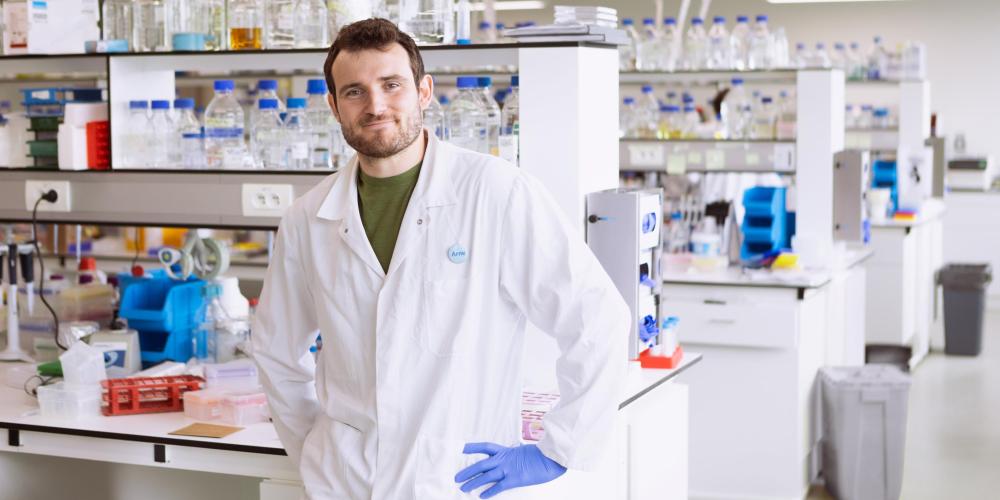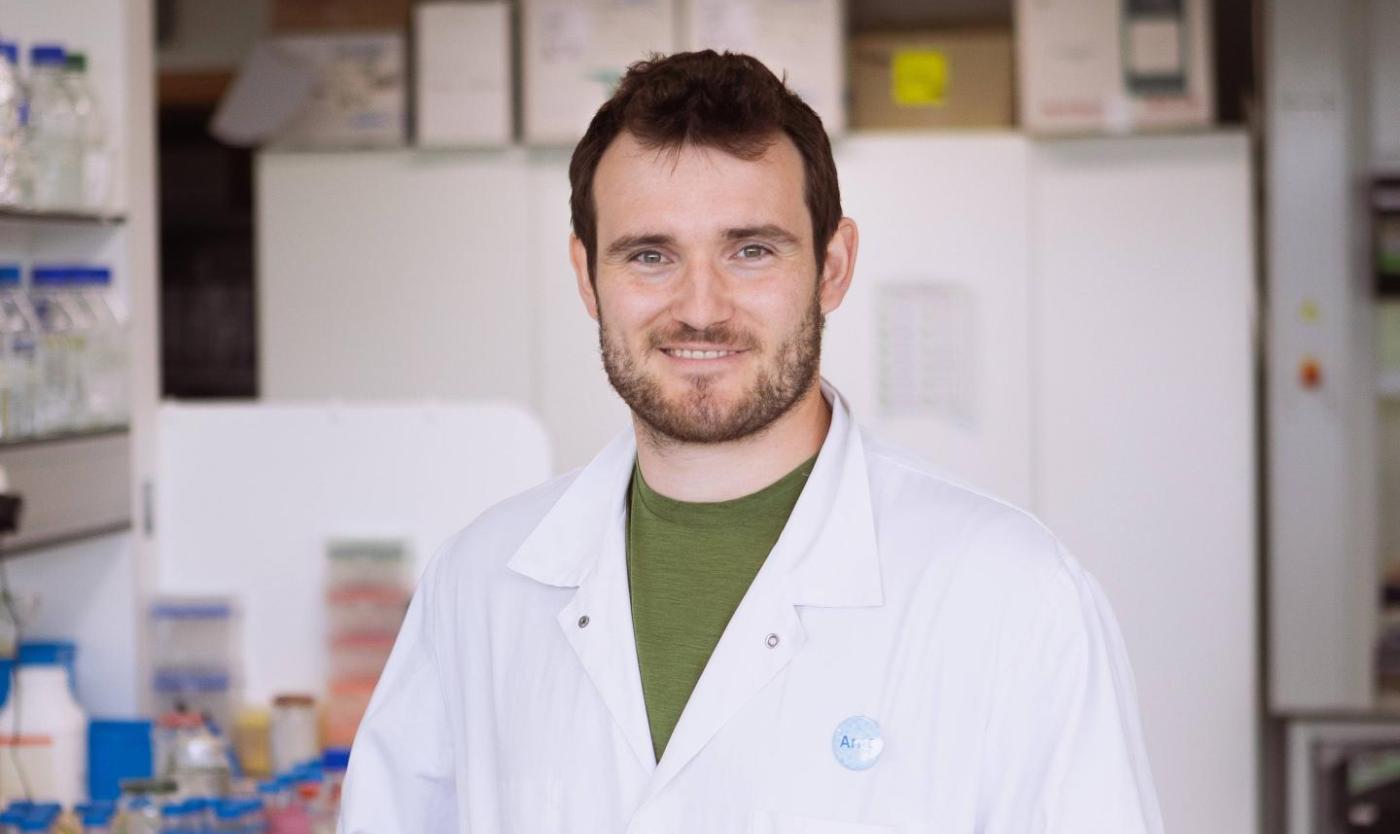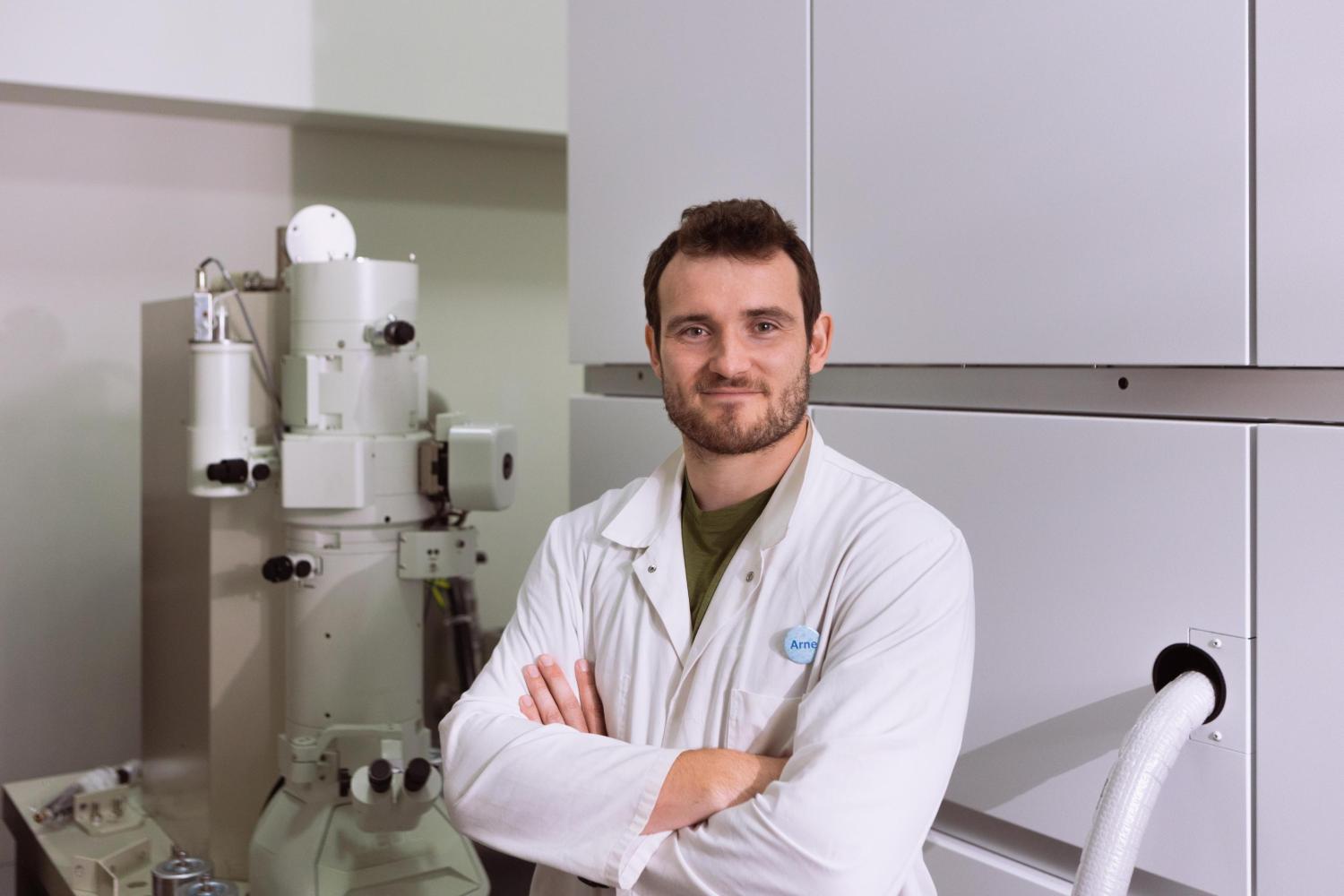
The talented researcher Arne Janssens (VUB and VIB) has been nominated for the Eos Pipet 2025, an annual award for promising young scientists. In his work in structural biology, he investigates how bacteria defend themselves against antibiotics. Together with his colleague Van-Son Nguyen, he discovered an unexpected weak spot in the defence mechanism: the small protein SlyB simply had to be eliminated in order to tackle the pathogen. This discovery opens the door to new treatments and earned them a publication in Nature.
You can vote for the candidates for the Eos Pipet 2025 award in the science magazine Eos.
Why are you participating in the competition for the Eos Pipette?
Arne Janssens: "The VUB selected me to participate. I probably wouldn't have thought of it myself. That's why it's great that they do that. It's good publicity for our research in the lab. For me, it's important that our lab, led by Professor Han Remaut, also conducts applied research that will hopefully improve people's lives in the future. But the nomination also draws attention to science in general. Science is often difficult for people to understand because it is far removed from our everyday lives. Yet we absolutely cannot do without it, because technology and medicine are driven by science. Fortunately, the COVID crisis has brought that realisation to the fore again. But not all pandemics that have been prevented by science make it into the media. So we need to use other channels to ensure that awareness remains, without needing a global crisis every time."
What was the turning point in your research when you realised: “This could be important”?
'It was an unexpected discovery! It's the eternal battle between science and bacteria. Our scientific attacks on the defences of bacteria are very necessary, because more and more pathogens are becoming resistant to antibiotics. My original research question for my PhD was: find new ways to combat bacteria that are resistant to antibiotics. During our research, we came across a surprising fact: a large number of bacteria have a fundamental defence mechanism that allows them to resist our attacks with antibiotics. That was also the big breakthrough."

‘So if we eliminate SlyB, the bacteria will once again become susceptible to our treatment.’
Can you explain how it works in simple terms?
"There is a large group of bacteria that is becoming increasingly worrying because we have hardly any weapons left to fight them. They pose a major threat to public health. These bacteria have not one, but two membranes, which makes them difficult to eliminate. We therefore call them double-walled bacteria. One way to eliminate them is to destroy the second wall. Our discovery was that the very small protein SlyB – which we thought was not very special – was able to keep that second layer around the bacteria intact when we released antibiotics on it. The trick of this defence is that a large group of SlyB proteins collectively had the capacity to protect that second layer. So if we were to eliminate SlyB, the bacteria would once again become susceptible to our treatment."
This earned you and your colleague Van-Son Nguyen a publication in Nature. What are the biggest challenges in the next steps of this discovery: developing a vaccine?
"We have already demonstrated that there is a potential vaccine. How? In the laboratory, we induced a strong response in a mouse to a bacterium that uses SlyB as protection. Now we need to see whether that response is strong enough to prevent disease. That is the first step. This will be followed by a lot of clinical studies to demonstrate that it is also safe. That makes sense, because you want to be sure that it is harmless when many people start using it. But that is also why medicines are such a billion-dollar market: it costs a huge amount of money to start and carry out that kind of research."
"Thanks to AI, you know much more quickly which direction to look in, instead of groping in the dark"
How do you see the role of structural biology evolving in the future of infectious disease control?
"In my view, it's an endless battle with pathogens. We mustn't be naive about that. For everything we discover, nature will develop a defence, so to speak. And then we have to get back to work. We also don't know what the threats will be in 15 to 20 years' time. So there will always be a need for structural biologists and new means of combating disease. Structural biology could be used more widely in the future. Artificial intelligence will play a major role in this. For example, there is the AlphaFold software, developed by Google DeepMind, which can accurately predict how proteins behave. Of course, it is not 100% foolproof, but thanks to AI, you know much more quickly which direction to look in, instead of groping in the dark. AI helps you formulate a hypothesis that is much more likely. As in any science, the effect of AI in structural biology will be significant and will greatly accelerate developments."

Arne Janssens in front of the microelectron microscope at the VUB
You work with the cryo-electron microscope in the lab at the Etterbeek campus. What makes this technique so powerful for your research?
"With this ingenious device, we can take pictures of objects the size of proteins. That is invaluable to us. We look at structures that are only a few nanometres in size, so they are not visible with ordinary light. With electrons, we can take images of such small subjects. We don't take just one photo, but millions, which we then combine to get a good image. Often it's not about a single protein, but a complex of different proteins. It is precisely at this point that we compare our images with AlphaFold's predictions. We see the real behaviour of proteins, black on white."
"Who am I doing this for?"
Personally, you consider applied research to be very important. Why?
“It's a motivation that I need myself. I'm a thinker. If I were only doing fundamental research, I would regularly ask myself: who am I doing this for? Why am I racking my brains over something that no one else is concerned about yet? That's why I find it interesting to be on the borderline between difficult fundamental issues that could also quickly lead to a possible application. Although I would also be the first to emphasise how essential and necessary fundamental research is. After all, it is the basis for all the applications that result from it. My ultimate goal is to bring science closer to people and improve their lives. That may sound grandiose, but that is my internal motivation."